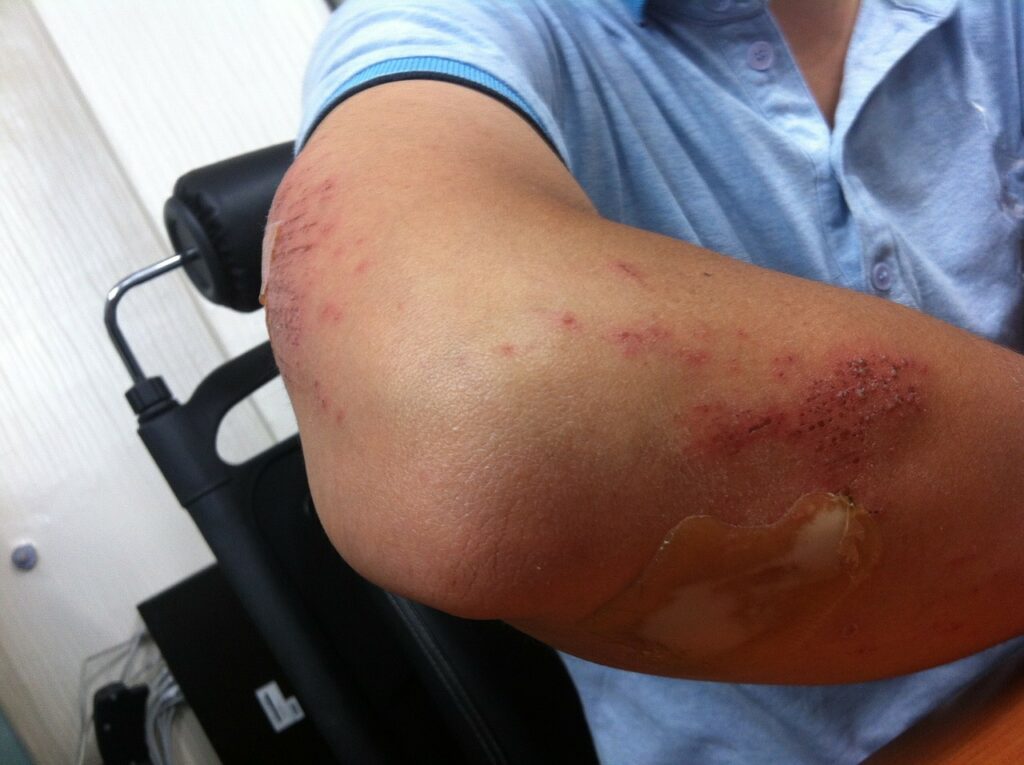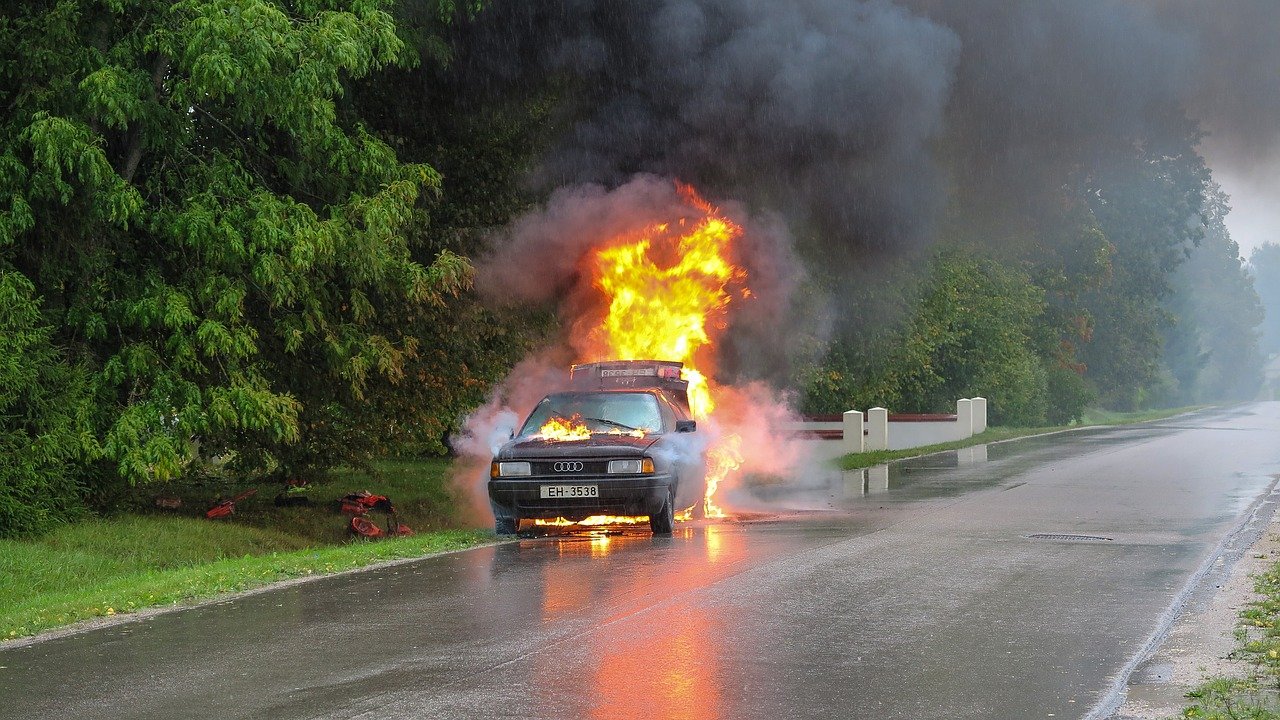Injuries and Accidents are two of the common terms that describe various ailments that affect ones ability.
How do you describe an injury( Injuries and Accidents ) ?
- An injury is any harm, whatever illegally caused to any individual of mind, body, property or reputation.
- A break in the natural continuity of tissues all in all.
What are the types of injuries( Injuries and Accidents ) ?
A) Mechanical injury:
- Due to sharp force
- Chop wounds
- Stab wounds
- Abrasion
- Contusion
- Laceration
B) Chemical injury:
- Acids
- Alkali
C) Thermal injury:
- Heat
- Burns
- Frostbite
D) Others:
- Electricity
- X-ray
- Lightening
- Explosions
How do you describe important injuries ?
1) Abrasions:
- Defined by destruction of the superficial layer of the skin.
- Furthermore, it is caused by friction or compression against a rough surface area.
- Characteristics of an abrasion:
- Bleed slightly
- No scar formation seen
- Heals rapidly
- Types of abrasions :
- Scratches
- Grazes- Movement between skin with contact from a rough surface
- Pressure abrasion – Caused due to crushing of superficial layers of the skin
- Impact abrasion- Caused due to a force with a rough object or surface
- Patterned abrasion
- Age and time:
- A fresh abrasion is bright red in color
- Stays from 12 to 24 hours
- Forms a scab due to drying of blood and lymph
- After a period of 2 to 4 days simultaneously it turns reddish brown scab
- After a period of 5 to 7 days it turns dark brown to black scab
- Additionally, the scab falls off and dries after 7 days
2) Contusion:
- It occurs due to rupture of blood vessels which leads to leaking of blood into the tissues
- Furthermore, caused by trauma like stone, fist, whip, bar, hammer and more
- Location:
- Contusions occur not only in the skin, but also internal organs like lungs, brain, muscles and heart
- Characteristics of a contusion:
- Swelling that’s painful
- Tearing sensation of tissues with no involvement of skin damage
- Bruises, all in all
- Factors that alter size and shape:
- Women bruise quite easily when compared to men because of increased superficial fat
- Children are more prone to bruises due to soft and loose tissues
- Diseased stage of vessels lead to bruises
- Complications:
- Shock
- Internal hemorrhage
- Gangrene and death of tissue
3) Lacerations:
- Lacerations are tear in the skin, mucous membranes or internal organs caused by a blunt force
- When a blunt force is acted upon the body, it leads to displacement of the tissues
- Causes:
- Blows by a blunt object or fall from an object
- Contused lacerations are caused simultaneously due force that leads to spreading of the blood to adjacent tissues.
- Types:
- 1) Split lacerations:
- Crushing of the skin occurring in between 2 hard objects that results in splitting
- 2) Stretch lacerations:
- Overstretching of the skin when fixed
- 3) Avulsion:
- Laceration produced by sufficient force
- 4) Tears:
- Tearing of the skin or soft tissue due to an impact from sharp objects
- 5) Cut lacerations:
- Sharp edged objects such as axe leads to cut lacerations
- Margins of cut lacerations are irregular, blunt, uneven
- 1) Split lacerations:

4) Wounds (Injuries and Accidents):
- It is caused by a mechanical force which may be a moving object or weapon
A) Incised wound:
- A clean cut simultaneously, caused through the tissues including the skin and blood vessels by a sharp edged object.
- Characteristics:
- Edges are clean cut, everted and well defined hence appear incised.
- Hemorrhage is more commonly seen
- Width is greater than the thickness of the edge of the weapon for an incised wound
- Oblique cut occurs when a weapon cute through the skin obliquely leading to incised wound.
- Incised wounds usually appear spindle shaped all in all
- Age of incised wound:
- Incised wounds appear in about 12 to 24 hours
- Additionally, Edges appear red, swollen with inflammation
- Scab of dried clot is seen
B) Suicidal wounds (Injuries and Accidents):
- These wounds occur in the left side of the neck, passing through the front of the throat hence affecting one part of neck.
- Simultaneously, Edges usually ragged affecting the superficial layers
- Meanwhile, Multiple wounds mite be seen around 20 to 40 wounds
- Usually less severe
- Additionally, Carotid artery is usually saved from injury
- Wounds usually occurs above the thyroid cartilage
C) Homicidal wounds:
- Affects the neck passing through the throat and both sides
- Additionally, Wound usually occurs below the thyroid cartilage
- Simultaneously, Multiple wounds occur
- Meanwhile, Wounds are sharp and clean with oblique cuts are seen
- Carotid artery and jugular veins usually cut all in all
D) Stab wounds:
- A stab wound is produced from the sharp edge of the knife or sword into the body
- Wound is deeper than the width and length on the skin
- Types:
- Puncture wounds
- Perforating wounds
- Penetrating wounds
- Characteristics of the wound:
- The wound edges, usually clean cut and inverted.
- Abrasions and bruising meanwhile produced when the knife enters the body thereby tearing and crushing the tissues
Furthermore, For more details please read this book : Essentials of forensic medicine
For more such blogs, do click here

